-
In recent months, Pompeii archaeologists have announced many impressive findings.
-
Announcements include a special fresco of a child and charcoal drawings of gladiators.
-
The discoveries provide insight into daily life before the volcanic eruption almost 2,000 years ago.
Before the eruption of Mount Vesuvius buried the city in ash and rocks, Region IX of Pompeii was a bustling region full of elegant homes, bakeries and other shops.
This year, the Archaeological Park of Pompeii unveiled a number of new discoveries from the area, including a beautiful blue shrine, children’s drawings of gladiators and incredible fresco paintings.
“The new excavations give us an idea of how much remains to be found,” Caitlín Barrett, co-director of Cornell University’s Casa della Regina Carolina (CRC) project in Pompeii, told Business Insider.
Photos show some of these latest discoveries from Region IX, offering a glimpse of what life was like in Pompeii nearly 2,000 years ago. Although much has changed over the millennia, some things, like dinner parties and children’s drawings, still seem familiar.
Region IX is home to both the beauty and brutality of ancient Rome.
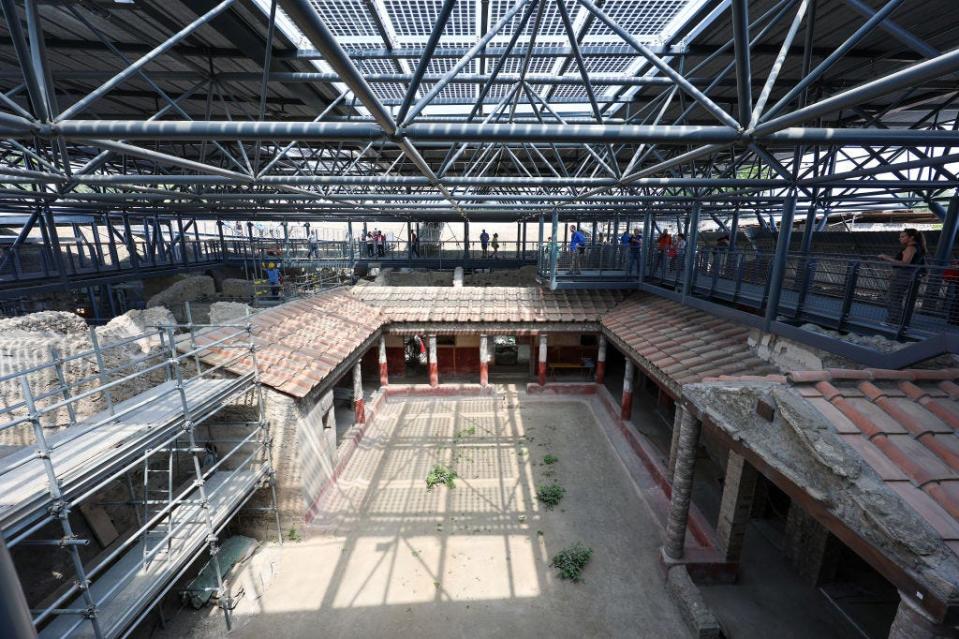
For hundreds of years, volcanic debris preserved Pompeii after the eruption in 79 CE.
Early excavations, which began in the mid-18th century, focused on works of art from the city rather than objects related to everyday life, says Barret, a National Geographic researcher who was not involved in the latest study. This meant that experts often overlooked those who did not own these luxury items.
People from all walks of life lived in Region IX, Barrett said. “There were very wealthy people who could afford houses that were covered in beautiful murals,” she said. “And then there were people who had much harder lives, like the enslaved people who were forced to work in a bakery that was locked with iron bars on the windows.”
Several new discoveries have been made in the area known for its chaste lovers.
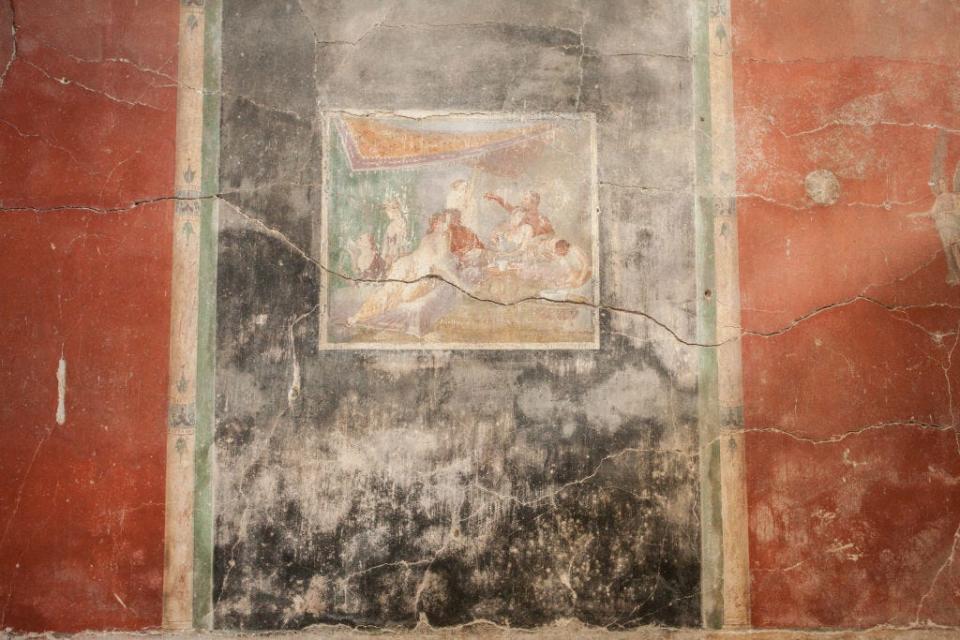

Since 1912, archaeologists have known about the existence of the House of the Chaste Lovers. It is a two-story building in the area known as Insula 12 — insulas are distinct collections of buildings, similar to a modern city block.
This fresco shows a couple sharing a romantic moment with others during a party. It is such an iconic image that Insula 12 is also called the Insula of the Chaste Lovers.
This island covers approximately 2600 square meters and contains several impressive houses.
The House of the Chaste Lovers recently reopened after a renovation project that began in 2017. Several new finds of the insula can now be seen. Visitors can view it from a new elevated path.
Experts found a ‘chilling’ portrait of a hooded child and his pet.
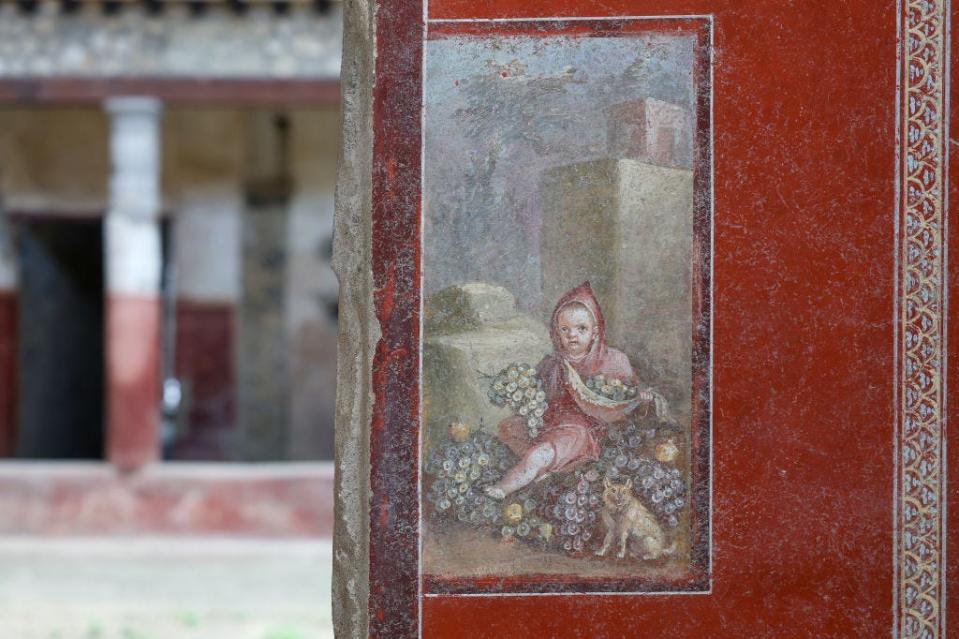

In early June, experts at the Archaeological Park of Pompeii unveiled what they called an “unusual” painting of a young child wearing a hood. He is surrounded by grapes and pomegranates and is accompanied by what appears to be a dog.
During this period, dogs were usually depicted hunting or keeping watch, but the one in this painting looks more like a playmate, according to an account in the E-Journal Scavi di Pompei.
Pomegranates can be a symbol of death, archaeologist Sophie Hay noted at X, suggesting the house’s owners wanted to commemorate a deceased child. She called the painting chilling, noting the toddler’s “haunted gaze.”
Thousands of years ago, children created their own gruesome works of art.
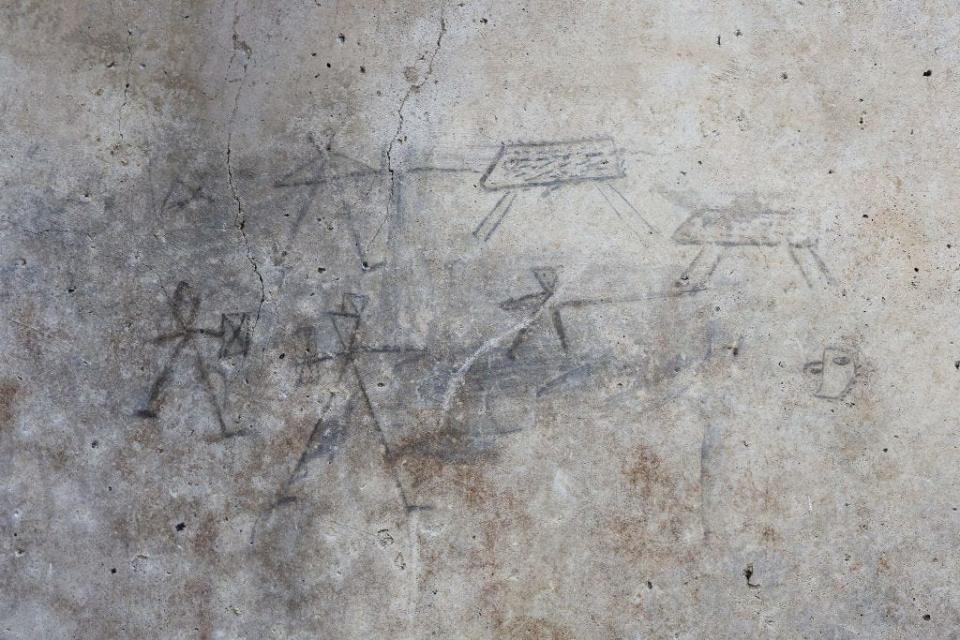

Recent excavations can also tell us how some children in ancient Rome played.
In the Insula of the Chaste Lovers is the House of the Colonnaded Cenaculum. Thousands of years ago, children used charcoal to depict gladiators and a hunting scene on the courtyard walls of the house.
Psychologists from the Federico II University of Naples examined the artwork and estimated that the child, or children, who drew it were about seven years old.
The gladiators in the drawing appear to be in combat, and a pair of hunters with spears face what appear to be two wild boars.
The children may have seen fighting in a nearby amphitheater.
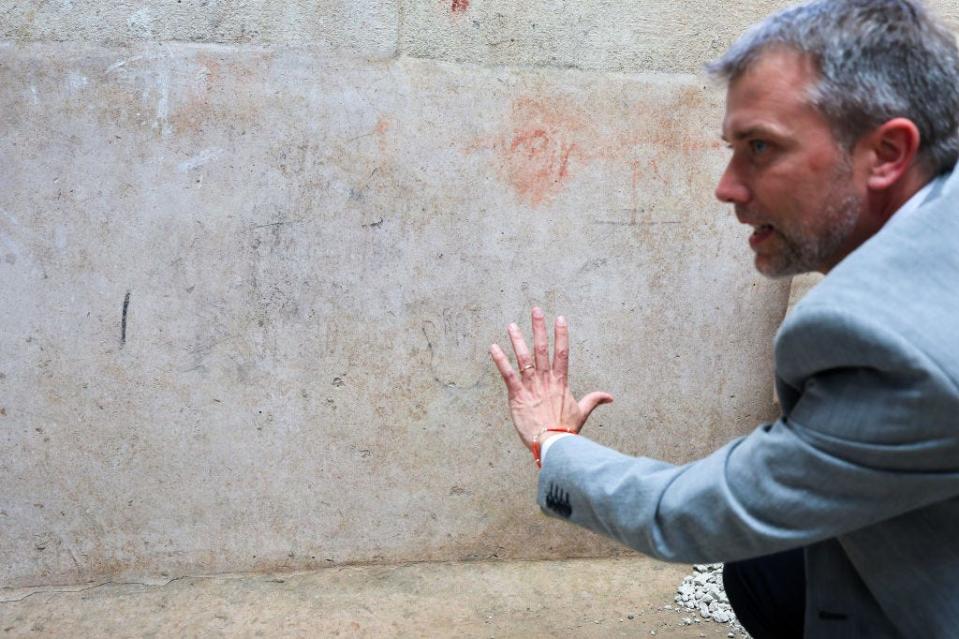

In the same courtyard, a younger child made charcoal drawings of perhaps five others, including the outline of a hand. According to the researchers, there are also images of boxers in the middle of a fight.
According to Pompeii experts, these were not necessarily scenes from a child’s imagination.
Children may have witnessed fights and executions at a nearby amphitheater and “were exposed to an extreme form of spectacular violence,” Gabriel Zuchtriegel, the director of the Archaeological Park, said in a statement.
Rich people had rooms decorated to impress guests.
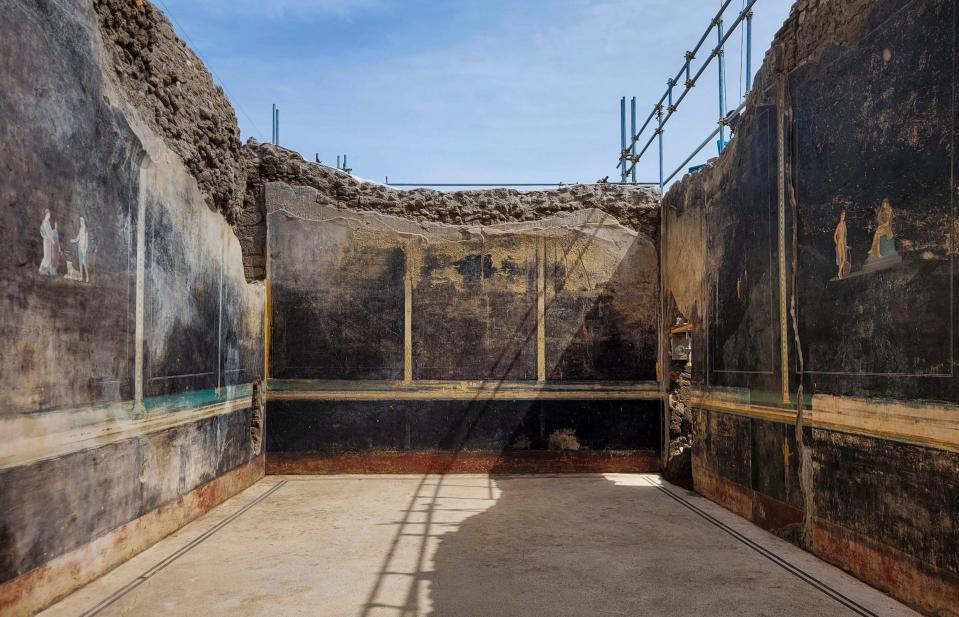

A few blocks away from the Chaste Lovers block is Insula 10, which has its own huge residential building.
One impressive house at Insula 10 contains many rooms, including an elaborate dining room and a richly decorated shrine.
The dining room of the Insula 10 residence has black walls covered with well-preserved frescoes and could seat several dozen guests, Zuchtriegel told NBC News.
According to a press release from the Archaeological Park of Pompeii, the size and layout were intended to impress.
Most people lived in simpler housing, Barrett said, in rented apartments or rooms or lofts above shops. “And even within wealthy households, enslaved residents would have lived in much more difficult conditions, sleeping on small and uncomfortable beds in cramped storage spaces,” she said.
During dinner, guests could discuss the frescoes.
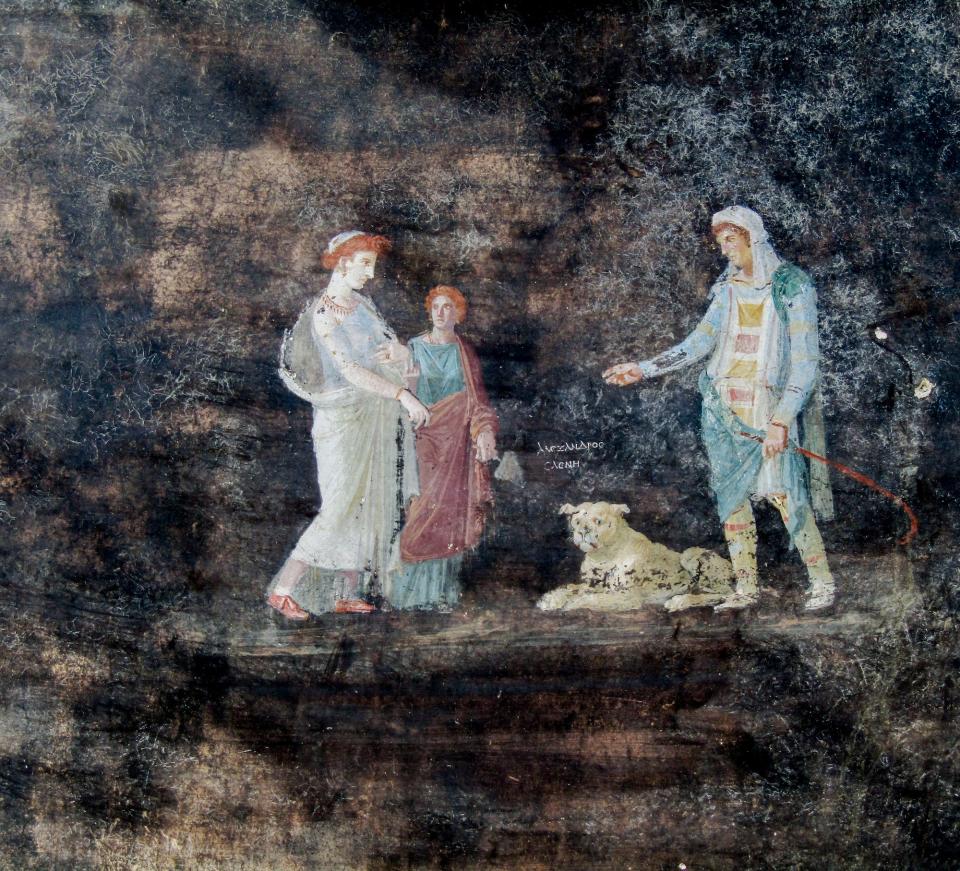

The images on the walls of the dining room depict scenes from myths and literature. “The paintings would have given people something to talk about over dinner,” Barrett said.
One shows the Trojan prince Paris meeting Helen, then Queen of Sparta. According to legend, it was this fateful combination that sparked the Trojan War.
Between the couple stands a maid — “who gives Helen a very doubtful look,” Barrett said — and a dog peering out from the fresco. “I love that the dog breaks the fourth wall,” Barrett said. “His horrified expression tells you everything you need to know about what’s going to happen!”
The frescoes contain images from mythology and literature.
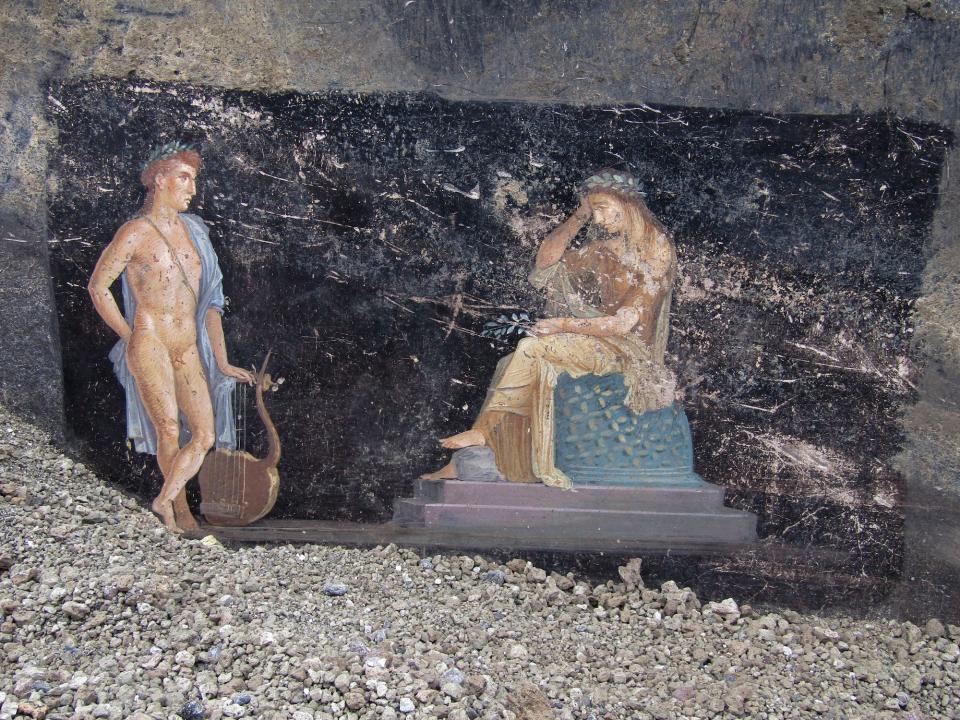

The black room has another fresco related to Greek mythology. Cassandra sits on the right, desperate because she cannot stop the Trojan War. The god Apollo, who looks at her in the painting, cursed her so that no one would believe her prophecies.
Archaeologists are working to preserve these and other frescoes from Pompeii by treating them with glue and erecting temporary roofs to protect them from the elements, the BBC reports.
While the frescoes are incredible, more ordinary objects can be just as important to document, Barrett says.
“The burnt figs and dates found in front of a home altar may not be as striking as the frescoes, but they do tell us something about the daily rituals that connected people to their gods,” she said.
A vibrant blue shrine revealed the owner’s deep pockets.
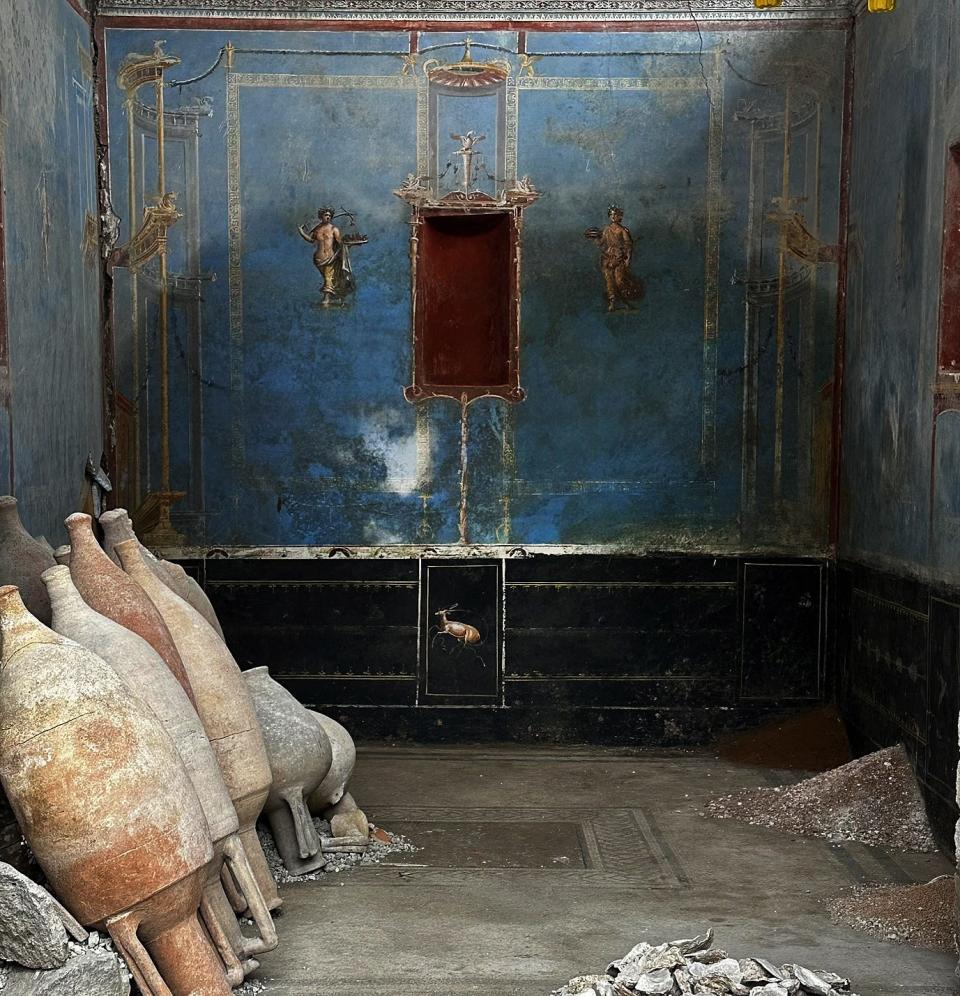

Another part of the house with the black dining room had a more private space. Yet it appears that the owners spared no expense in decorating the room, which may have served as a shrine.
The owners had it painted blue, which would have been very rare and expensive at the time.
“If you had painted an entire room blue, it would have made an important statement about the homeowner’s wealth,” Barrett said.
Paint was usually made from natural materials such as minerals or plants. The “Egyptian blue” pigment was synthetic and therefore more expensive. “So it was not only valuable, but high-tech,” she said.
The owners seemed to renovate the room at the time of the volcanic eruption. A pile of oyster shells was found with other building materials, Barrett said. The workers may have planned to grind them up and add them to plaster to make an ivory white pigment.
A third of Pompeii’s archaeological site remains unexcavated, so there is much more to learn as the rest is excavated.
Read the original article on Business Insider